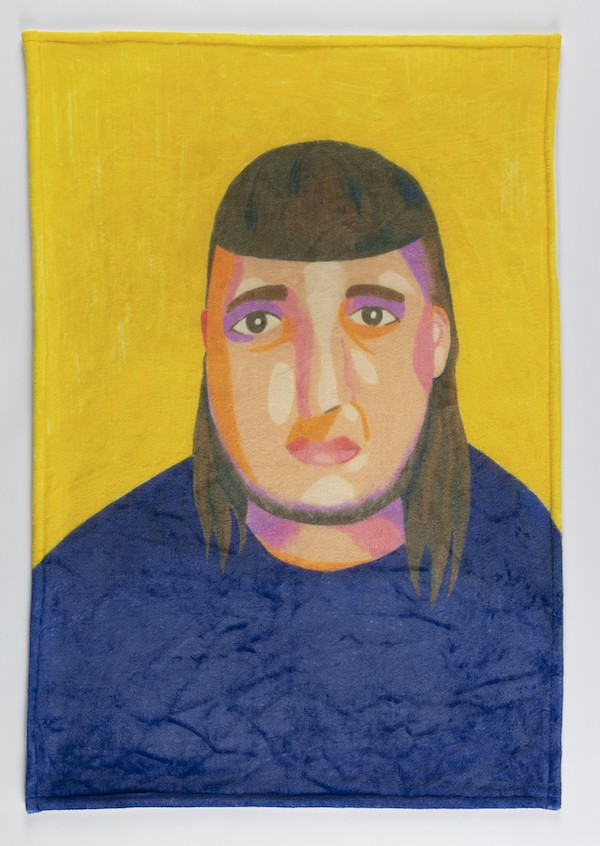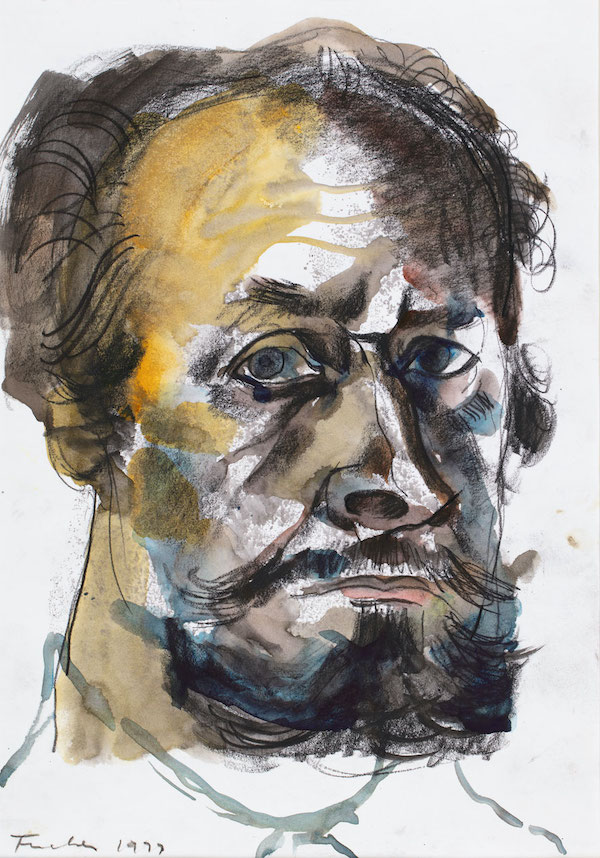On the face of it artists Carla Adams and Albert Tucker are an odd couple, but as Miranda Johnson discovers, their works reverberate off one another in ways that reveal the powerful and damaging impact of social expectations.
An unlikely but effective double act
6 January 2021
- Reading time • 5 minutesVisual Art
More like this
- A walk with Tina Stefanou
- A blaze of glorious people
- Diving into the gothic world of Erin Coates
‘sorry I was/am too much’, Carla Adams and Albert Tucker ·
Art Gallery of Western Australia ·
It’s an unexpected but effective pairing for an exhibition.

print on sherpa fleece, with digital print, 120 x 70 cm, © Carla Adams
In bringing together the works of one of Australia’s foremost modern painters, Albert Tucker, with those of contemporary Perth artist Carla Adams, curator Robert Cook provides fascinating insights into the different ways women and men are taught to express or repress their feelings. Revealing complex emotions, interpersonal struggles and internal angst, the exhibition “sorry I was/am too much” sheds new light on Tucker’s works whilst providing a deeper insight into Adams’ practice.
Focused particularly on faces, Adams’ works lead the viewer through her observations of the world of online dating apps and romance. Communicated through painting, textiles, and some of her visual diaries, these observations shine a critical light on the way in which people engage with one another in the 21st century, particularly men with women.
With titles such as Men who have been mean to me on tinder, Adams’ portraits of men explore the particular threat of men with normal, average faces who display an extremely abnormal attitude towards women online. Their expressions are deliberately simplified to make them appear banal, harmless; a mask covering the aggression that lurks within.
Tucker’s works on paper, taken from AGWA’s collection, seem like an antithesis of this restrained expression. Untitled [screaming man with extended arms, bust of man in unidentified uniform] (c1942-c1946) and his own self-portrait are examples of works that expressively illustrate extreme emotion, from the agony and violence of war to the breakdown of Tucker’s own marriage.

This emotional turmoil is presented as a way to understand modern Australian culture and life in the 20th century. What also manifests, however, is a disturbing attitude towards women and, to me, an uncomfortable sense of moral superiority. Women’s bodies are presented as lumps of flesh, reduced to their parts without agency, and activities such as sunbathing or spending time with American servicemen are judged by Tucker as, as one work’s title suggests, “images of modern evil”.
Viewing the works by Adams and Tucker side-by-side makes it clear how damaging masculine emotional repression can be, and the problems it causes when men feel unable to truly express or articulate their feelings. As Adams documents her experience engaging with men both online and in person, we see how they assert dominance, cast judgement, and feel empowered to utter awful, damaging words to others. Set against an exhibition design that felt very feminine, Tucker’s works stood out in their expressions of extreme emotion against Adams’ more restrained documentation of thoughts, experiences and feelings.
This doesn’t mean, however, that Adams’ works are not emotional – in fact, I found them to be powerful in the way they logically, thoughtfully and simply set out, across multiple media, the often exhausting and never-ending experience of being publicly female. Her work documents these men, but it also provides insight into her own thoughts and feelings in deeply personal ways, centring her experiences and feelings in her practice in a way that, presented alongside Tucker’s works, feels incredibly intimate, personal and radical.
Where both artists turn an eye to the culture within which they are living, Adams’ works place herself firmly inside this culture, whereas Tucker’s works seems to me an attempt to remove himself from it. Here we see the different ways in which women and men are socialised to deal with their feelings, and the damage that can be caused by men who are too afraid to really let themselves feel.
“sorry I was/am too much” continues until 15 March 2020.
Pictured top: ‘sorry I was/am too much‘ AGWA installation view, 2020. © The Estate of Barbara Tucker. Courtesy of Sotheby’s Australia. © Carla Adams. Photo: © Robert Frith – Acorn Photography.
Like what you're reading? Support Seesaw.






